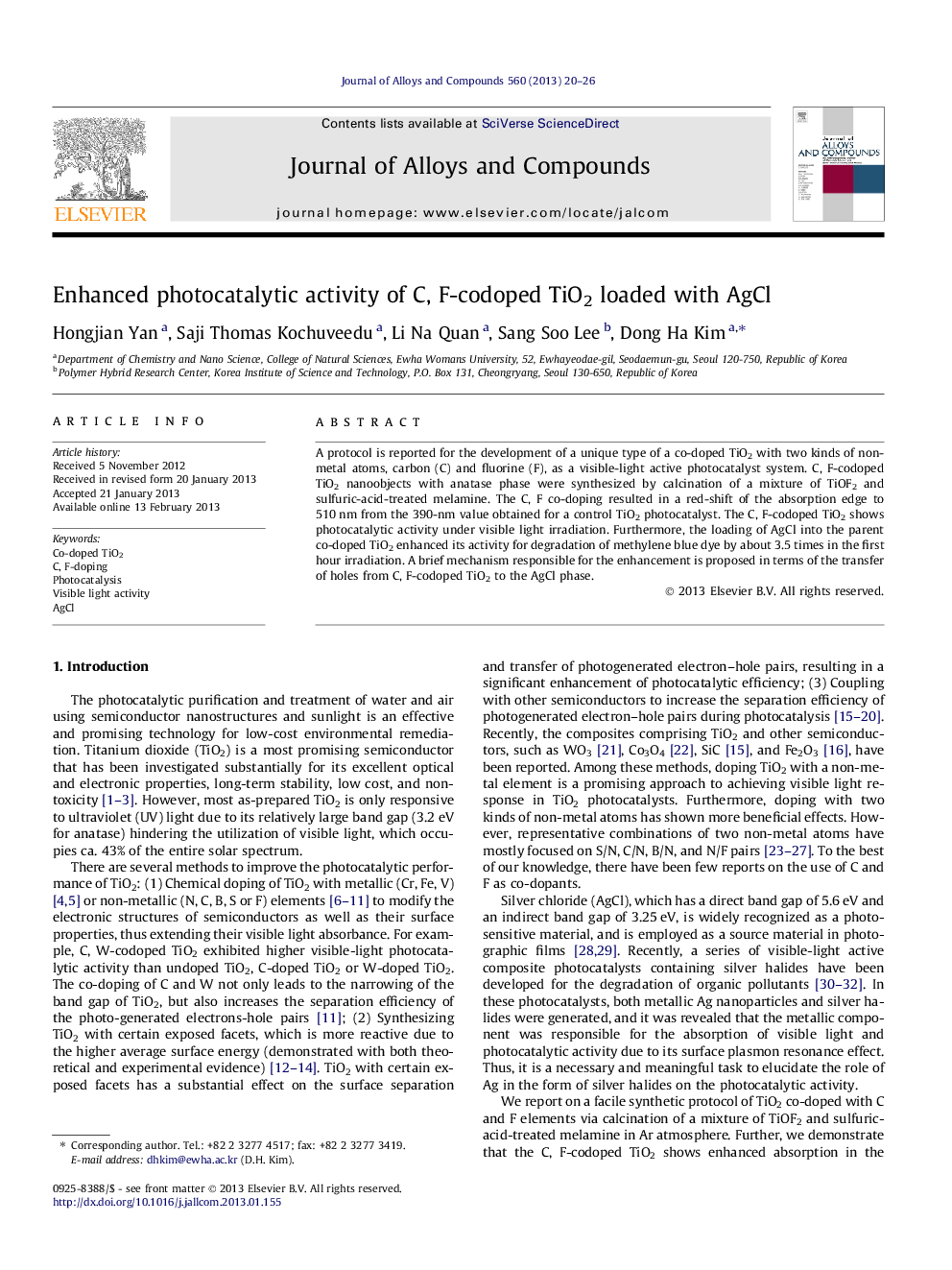| Article ID | Journal | Published Year | Pages | File Type |
|---|---|---|---|---|
| 1614318 | Journal of Alloys and Compounds | 2013 | 7 Pages |
A protocol is reported for the development of a unique type of a co-doped TiO2 with two kinds of non-metal atoms, carbon (C) and fluorine (F), as a visible-light active photocatalyst system. C, F-codoped TiO2 nanoobjects with anatase phase were synthesized by calcination of a mixture of TiOF2 and sulfuric-acid-treated melamine. The C, F co-doping resulted in a red-shift of the absorption edge to 510 nm from the 390-nm value obtained for a control TiO2 photocatalyst. The C, F-codoped TiO2 shows photocatalytic activity under visible light irradiation. Furthermore, the loading of AgCl into the parent co-doped TiO2 enhanced its activity for degradation of methylene blue dye by about 3.5 times in the first hour irradiation. A brief mechanism responsible for the enhancement is proposed in terms of the transfer of holes from C, F-codoped TiO2 to the AgCl phase.
Graphical abstractFigure optionsDownload full-size imageDownload as PowerPoint slideHighlights► C, F-codoped TiO2 was synthesized by calcination of the mixture of TiOF2 and melamine. ► The C, F-codoped TiO2 shows photocatalytic activity under visible light irradiation. ► The loading of AgCl into the co-doped TiO2 enhanced its activity about 3.5 times.
